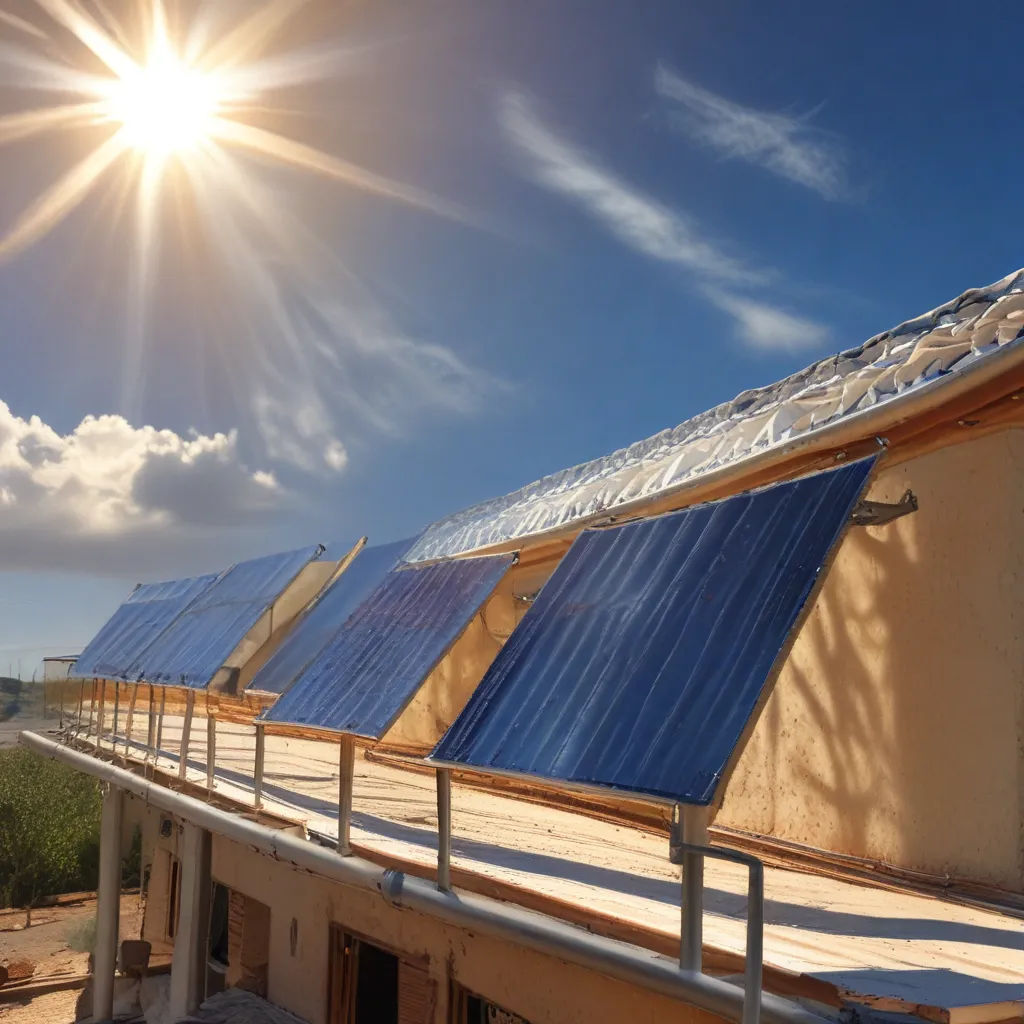
Harnessing the Power of the Sun’s Warmth
Have you ever noticed how the sun’s rays can make a room feel warmer, even on a chilly day? That’s the power of solar energy – a renewable, infinite resource that’s been captivating humans for centuries. As a kid, I remember experimenting with mirrors to try and light a campfire, just like the ancient Greeks and Romans. Little did I know that their simple tricks were the humble beginnings of what we now call solar thermal technology.
The Evolution of Solar Thermal Energy
The story of solar thermal energy goes back millennia. In the 7th century BC, humans were already using sunlight to light fires by reflecting the sun’s rays onto shiny objects. Centuries later, the Greeks and Romans harnessed solar power with mirrors for religious ceremonies. But it wasn’t until 1839 that the real breakthrough happened – when 19-year-old French physicist Edmond Becquerel discovered the photovoltaic effect, laying the foundation for modern solar technology.
Fast forward to 1954, and the first silicon photovoltaic (PV) cell was developed at Bell Labs, capable of converting the sun’s energy into usable electricity. This paved the way for solar panels, which you’ve probably seen on rooftops, electronic road signs, and even in parking lots, powering lights and feeding energy back into the grid.
But solar power isn’t just about generating electricity – it’s also about harnessing the sun’s heat. Solar thermal technology uses the sun’s UV radiation to create heat, which can be used for a variety of applications, from heating water in homes to powering large-scale power plants. And the best part? It’s a renewable, sustainable solution that’s becoming increasingly accessible and affordable.
How Solar Thermal Technology Works
The basic premise of solar thermal technology is simple: it collects the sun’s UV radiation and converts it into heat. This is done through a process called the photovoltaic effect, where sunlight hits a semiconductor material (like silicon) and releases electrons, creating an electric current.
In a solar thermal system, this current is then used to heat a fluid, usually a mixture of water and food-grade glycol. The heated fluid circulates through a closed loop, transferring the heat to a heat exchanger, which in turn heats the water or air in your home or building.
But it’s not just about the electricity – solar thermal technology also utilizes the sun’s direct heat. Special coatings inside the evacuated tubes of a solar thermal collector help evenly distribute the heat, reaching temperatures of up to 400°F. This heat is then transferred to the fluid in the closed loop, providing a reliable source of renewable energy for your heating and hot water needs.
The Benefits of Solar Thermal Energy
The benefits of solar thermal technology are numerous. First and foremost, it’s a renewable and sustainable solution that doesn’t produce any harmful greenhouse gas emissions. As long as the sun continues to shine, we’ll have a steady supply of energy to power our homes and businesses.
But it’s not just about being eco-friendly – solar thermal technology can also save you money. By preheating the water entering your boiler or hot water heater, you can significantly reduce your energy costs, with some customers reporting savings of up to 95-100% on their energy bills.
And the best part? Solar thermal technology is becoming more and more accessible. In fact, the UK’s first transmission-connected solar farm was just energized in May 2023, feeding electricity directly into the national grid and powering the equivalent of over 17,300 homes. The US is also making major investments in solar technology, with the goal of powering 40% of the nation’s electricity with solar by 2035.
Unlocking the Potential of Solar Thermal
So, why haven’t more people jumped on the solar thermal bandwagon? Well, for starters, there’s still a lot of misconception around the technology. Many people think that solar power is only about generating electricity, when in fact, it’s also a fantastic way to heat our homes and water.
But that’s where companies like Solar As Systems Inc. come in. We’re on a mission to educate homeowners and businesses about the incredible potential of solar thermal technology. By providing customized solutions and expert guidance, we’re helping our clients unlock the power of the sun’s rays and start saving big on their energy bills.
And the best part? It’s not just about the numbers – it’s about the impact we’re making on the environment. Every solar thermal system we install is a step towards a cleaner, more sustainable future, reducing our reliance on fossil fuels and contributing to the fight against climate change.
The Future of Solar Thermal Technology
As exciting as solar thermal technology is today, the future looks even brighter. With continued advancements in materials, coatings, and heat transfer systems, we’re seeing ever-increasing efficiency and performance. And as the technology becomes more widespread, economies of scale are driving down the costs, making it more accessible to homeowners and businesses alike.
But it’s not just about the technology itself – the policy landscape is also shifting in favor of solar power. Governments around the world are setting ambitious targets for renewable energy, and solar thermal is poised to play a crucial role. In the UK, for example, the government is aiming for a five-fold increase in solar deployment by 2035, while the US is investing heavily in technologies to help integrate solar into the grid.
So, what does the future hold? If you ask me, it’s a future where the sun’s warmth is powering our homes, businesses, and communities, reducing our carbon footprint and paving the way for a cleaner, more sustainable world. And with companies like Solar As Systems Inc. leading the way, I believe that future is closer than you might think.


